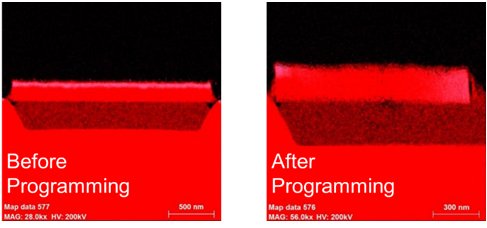The Century War: AC vs. DC Has Returned to the Battlefield
Over a century ago, the war between two power systems, alternating current (AC) vs. direct current (DC), had led us to a new era. Today, after 138 years, a new AC vs. DC century war has returned to the battlefield: analogue computation vs. digital computation. This war will lead us to a new AI/AGI generation and reveals a revolution for whole semiconductor market.
Digital computation has advantages on area and anti-noise comparing with traditional analogue computation. With those advantages, digital computation occupied semiconductor markets for decades. However, for AI applications requires “real-time-response”, such as automotive or aerospace, very high computation capability is necessary if adopting digital computation system. To meet the enormous demands, the system has built with more complex hardware and consume more power to support the needs.
To achieve the “real-time-response” requirement, analogue computation system is the only solution for next generation AI applications. The key to achieve analogue computation is in memory computation (IMC) a main technique of neural network architecture. To realize the idea, analogue memory is an indispensable piece. There are bunch of solutions for the analogue memory by material, such as MRAM, or by algorithm, such vector matrix multiplication. However, those solutions are not easy to port/implement from a process platform to another and result to a costive solution.
An Analogue OTP Memory is Realized by AGIC Unique “Wave-Particle Separation” Technology
AGIC team developed a unique “wave-particle separation” technology which achieve the AGIC Particle Momentum (APM). Figure 1. shows the APM results of the atom distribution on a common semiconductor material which exists in original foundry process. According to APM technology, the “atom” can be moved and changed its distribution. Hence, the resistance can be changed on a semiconductor material which can simulate the “weight” in biomedical neural network system.

Figure 1. EDX result of atom distribution before and after APM.
AGIC Technology C-Fuse OTP provides following benefits:
- High-Temp Immunity (>400°C~1000°C)
- Portable across all process nodes including CMOS Logic, BCD, eHV, DRAM, and etc.
- No additional masks
- No additional steps
- No special/material requested
- Support geometry from 350 nm to 5 nm and beyond
- Qualification for AEQ-100 Grade 0 requirements
- MLC feature for high security requirement
Welcome to visit our website and contact with us for more detail presentation and discussion.
Artificial General Intelligence Cosmos IP total solution.
AGICIP (www.agicip.com)
Please contact us: Sales@agicip.com
Related Semiconductor IP
- LPDDR6/5X/5 PHY V2 - Intel 18A-P
- ML-KEM Key Encapsulation & ML-DSA Digital Signature Engine
- MIPI SoundWire I3S Peripheral IP
- ML-DSA Digital Signature Engine
- P1619 / 802.1ae (MACSec) GCM/XTS/CBC-AES Core
Related Blogs
- UA Link vs Interlaken: What you need to know about the right protocol for AI and HPC interconnect fabrics
- Synopsys Expands Collaboration with Arm to Accelerate the Automotive Industry’s Transformation to Software-Defined Vehicles
- Say Goodbye to Limits and Hello to Freedom of Scalability in the MIPS P8700
- Migrating the CPU IP Development from MIPS to RISC-V Instruction Set Architecture
Latest Blogs
- Why What Where DIFI and the new version 1.3
- ML-DSA explained: Quantum-Safe digital Signatures for secure embedded Systems
- Efficiency Defines The Future Of Data Movement
- Why Standard-Cell Architecture Matters for Adaptable ASIC Designs
- ML-KEM explained: Quantum-safe Key Exchange for secure embedded Hardware
